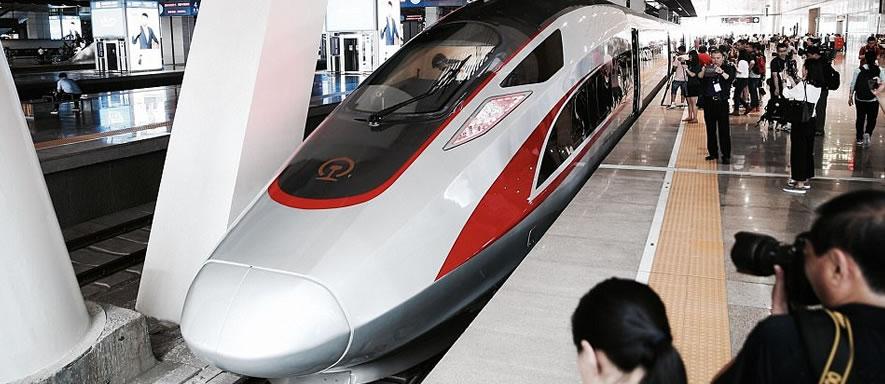China has relaunched its fleet of high-speed bullet trains after capping speeds in 2011 following two tragic crashes that left 40 people dead. The top speed of the Fuxing or “rejuvenation” trains was capped at 300km/h after the accidents, but will now be increased to top speeds of up to 350km/h.
Introducing the high-speeds is expected to reduce journey time between Beijing and Shanghai by an hour. There will be seven of the bullet trains traveling at 350km/h by September 21, CNN reported. The name “Fuxing” which is Chinese for “rejuvenation” is in line with a national government slogan and development plan.
The 2011 accident saw two high-speed trains traveling on the Yongtaiwen railway line collide on a viaduct in the suburbs of Wenzhou, Zhejiang province. The two trains derailed each other, and four cars fell off the viaduct, reports said. It was the first fatal crash involving high-speed rail (HSR) in China, and the deadliest in history.
However, high-speed wasn’t a factor in the accident, since neither train was traveling faster than 99km/h. An investigation of the crash revealed that the faulty signal systems were at fault, which failed to warn the second train of the stationary first train on the same track, as well as management failures putting the railway officials at blame.
Nevertheless, the accident had a strong impact on the development of HSR in China, and public confidence in the technology plummeted, leading to lower ridership. Speeds on other major high-speed rail lines were reduced and China’s reputation for HSR was scrutinized internationally.
The crash ignited sharp contrasts between China and Japan, with both Chinese online commentators and international publications highlighting that Japan has never experienced a crash on its high-speed rail lines, despite being in operation for over forty years. Japan’s Shinkansen fleet, commonly known in English as “bullet trains”, travel at a maximum speed of 320km/h.
China has subsequently taken extra precaution with the relaunched high-speed trains. All of the vehicles have been fitted with an improved monitoring system that will halt the trains automatically in the event of an emergency.
China is believed to have 22,000km (14,000 miles) of HSR as of end December 2016, accounting for two-thirds of the world's total. The nation’s rail operator is said to be exploring ways to upgrade the train tracks to enable engines to run even faster, at speeds of up to 400km/h.
Test runs reached 443km/h (275 mph) for conventional rail in 1996, and in 2015 a world record was set at 603km/h for ‘maglev’, a public transport technology that uses magnetic levitation to move vehicles without making contact with the ground or an electrical pickup.






